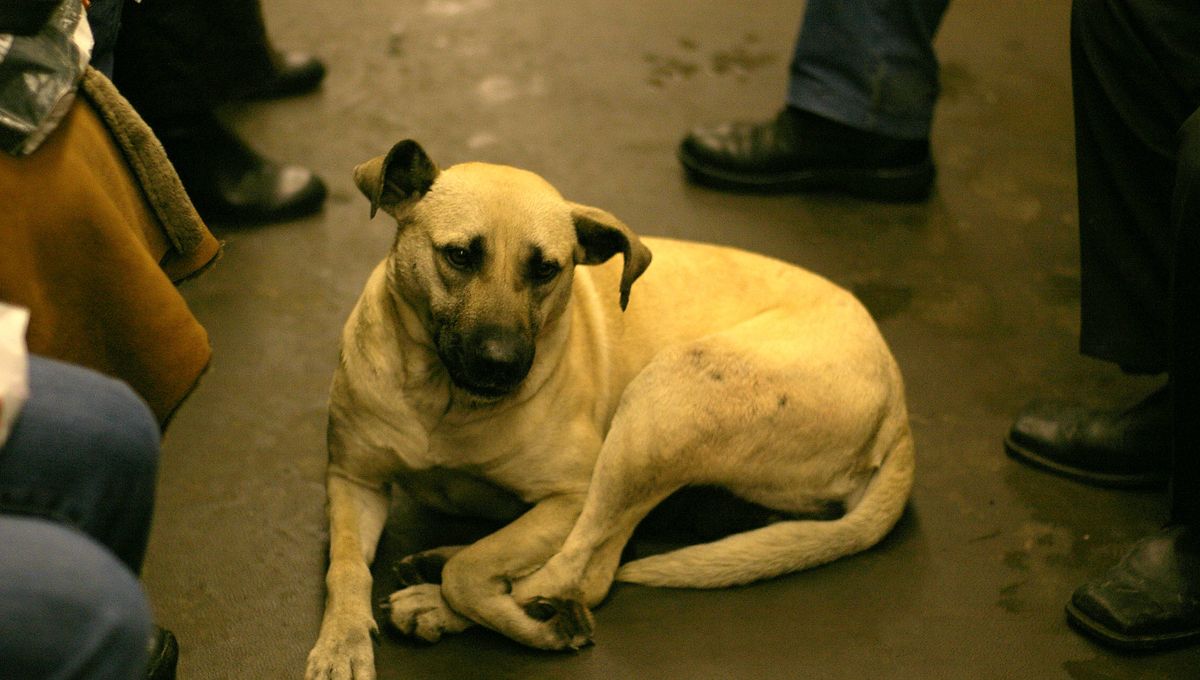
Are you fed up of your commute to work, packing yourself onto busy underground trains only to rub shoulders with the same fatigued, bored, or otherwise stressed passengers each day? It’s a typical experience of the modern urban work life, but wouldn’t it be so much better if this situation included dogs? There are few things that are not brightened by the presence of a pup, and commuting is no different. In fact, there are dogs in Russia that regularly travel on trains to visit food stalls they like.
This may at first appear like a like a novel experience, but it also hints at a very deep connection between dogs and a peculiar part of Russian culture.
The story of the commuting dogs was first noticed by western media around 2008. Since then, many posts have appeared online showing them taking trains alongside human travelers. They don’t just ride trains either; it’s clear that the Moscow dogs have even adapted to use escalators as needed. It seems some even get a kick from rushing for train carriages just before they close.
To be clear, this is not a phenomenon common to all the stray dogs in the city. There are estimated to be around 35,000 strays in Moscow, but only about 20 are thought to have taken up traveling on the underground. They not only appear to be able to identify which trains to board, they also know where to get off. They even seem to show a kind of patience for busy trains that most regular human commuters would probably find impossible to replicate.
But how did these animals learn to do this? There are probably a few reasons. Firstly, as Jacqueline Boyd, a lecturer in Animal Science at Nottingham Trent University, noted in a Conversation piece in 2016, the dogs, like others of their species, have likely picked up on human behaviors. As she notes, our species have co-evolved for several thousand years, which has allowed them to become pretty adept at interpreting our social cues. This would allow the Moscow metro dogs to know who to approach for food and a friendly pat, while also knowing who to avoid.
At the same time, the metro dogs have also learnt to associate the trains with food and a warm place to stay. It’s a form of positive association, similar to the way that we train pet dogs to “sit” on command in return for a snack. There is certainly good evidence to suggest that local commuters have helped reinforce the behavior in the animals, as they appear to be regarded positively. In 2001, a 22-year-old model stabbed a metro dog (called Mal’chik [Boy]) to death in a random act of violence. The incident received widespread condemnation at the time, resulting in the creation of a monument to commemorate the poor dog and to stand for the protection of other animals.
This does help account for some aspects of the dogs’ behavior, but not all of it. For the rest of the puzzle, we need to look a little closer at the specific context itself. Or, to put it a different way, why Moscow?
According to an article written by Alaina Lemon, a professor of anthropology at the University of Michigan, the story of the Moscow metro dogs is very much tied up with the cultural history of the Soviet Union. Russia, Lemon contends, has a bond with dogs that has been formed and shaped by its cultural and political history.
Within this context, the metro dogs have formed part of the wider post-Soviet era citizenry and rather than being independent, adventurous individuals, are seen as part of the old Soviet egalitarian ideal. This is something that is often missed out from the histories of the Soviet Union: they loved their dogs, and the Soviet dog and Soviet human both experienced the trials and tribulations of the Soviet regime together.
“Anglophone media about Russia usually foreground legacies of Stalinist oppression or Putinesque corruption, but their MetroDog stories minimize links to Soviet-era ideals or practices. They miss seeing that, when a Moscow passenger surrenders a good seat to a tired pup, she might be aspiring to a ‘socialist-era’ morality still understood as valuable,” Lemon wrote.
Source Link: Dogs In Moscow Know How To Use Metro Trains And They're Now Part Of Commuting Life